Fall 2018 Newsletter
- Statewide Impact: Training on Sexual Assault, Home Visitation, and Child Welfare
- Apply for HealthCare.gov Health Care Insurance November 1 – December 15
- Services Expand in Western Kansas: Options’ New Satellite Office and More
- Increasing Access to Legal Services for Victims: Legal Assistance to Victims Project
- Kansas Governor Proclaims October 2018 Domestic Violence Awareness Month
- National Hispanic Heritage Month
- Glad you asked: “Why Don’t They Just Leave?”
- Kansas Victim Advocacy Programs and Other Resource Links
Training and education improves the response victims and perpetrators receive from their communities. Each person who better understands the dynamics of sexual and domestic violence will increase safety for victims and accountability for perpetrators. KCSDV trained about 1,800 professionals statewide in a series of different topical trainings this year.
The four training subjects:
- Child welfare and protection
- Home visitation when domestic violence is occurring
- Community sexual assault response team collaboration
- Trauma informed sexual assault response
 Child welfare and protection: Over 500 professionals working in the child welfare system attended KCSDV’s training course Empowering Kansas Families: Strategies and Skills to Address Domestic Violence. KCSDV held 11 of the child welfare and protection trainings in Topeka, Olathe, Chanute, Wichita, Hays, Emporia, with additional webinars online on April 1 – September 26, 2018.
Child welfare and protection: Over 500 professionals working in the child welfare system attended KCSDV’s training course Empowering Kansas Families: Strategies and Skills to Address Domestic Violence. KCSDV held 11 of the child welfare and protection trainings in Topeka, Olathe, Chanute, Wichita, Hays, Emporia, with additional webinars online on April 1 – September 26, 2018.
The course provided participants with strategies and skills to effectively identify domestic violence in child welfare cases and information on how to apply appropriate interventions for families experiencing domestic violence. During the skills-based training, participants were provided information and tools to identify, assess, and document perpetrator and batterer dangerousness, and parenting capacity. They were also provided with information on how to describe the impact of battering behavior on the relationship between protective parents and their children. Participants learned how to identify safety and protective actions that adult victims use to keep their children safe and how to hold batterers accountable through interviewing, assessment, and documentation techniques. Case planning strategies promoting child and adult victim safety, as well as perpetrator accountability, were also provided. Each participant received a copy of KCSDV’s recently published Domestic Violence Manual for Child Welfare Professionals.
Home visitation when domestic violence is occurring: Over 100 home visitation professionals and victim advocates attended Home Visitation and Domestic Violence: Enhancing Safety and Support for Children and Families. KCSDV held four of the child welfare and protection trainings in Iola, Wichita, Kansas City, and Salina on June 21 – September 4, 2018.
The course discussed strategies and skills to effectively address domestic violence while working with families through home visitation programs. During the advanced, skills-based institute, participants learned about domestic violence and its effect on the health and safety of victims of domestic violence, including reproductive coercion and the impact of domestic violence on perinatal health outcomes. Attendees had the opportunity to learn about and practice building collaboration with domestic violence program advocates. The course provided participants with information on how perpetrators and batterers impact the lives of children, and it explored the protective actions of survivors as parents and ways to increase protective capacity. The training provided participants with best practice strategies for screening, referrals, and enhancing safety. Vicarious trauma and how to support staff was also discussed.
Community sexual assault response team collaboration: In June 5 – September 25, 2018, KCSDV, in partnership with the Kansas Bureau of Investigation (KBI), hosted the course Safety, Accountability, Justice: Enhancing Coordinated Responses to Sexual Assault Cases within Multidisciplinary Teams. About 200 professionals attended. Attendees included law enforcement officers, prosecutors, community-based advocates, system-based advocates, sexual assault nurse examiners, forensic nurses, and forensic laboratory personnel attended.
The seven trainings were held in Hutchinson, Salina, Pittsburg, Lawrence, Wichita, Hays, and Garden City.
The training defined common goals and understanding of each professional’s role in sexual assault cases to enhance coordinated, trauma-informed responses to sexual assault. The course provided participants with information on effective team approaches to victim notification and contact in sexual assault cold cases, including training on the Kansas Sexual Assault Kit Initiative victim notification protocol.
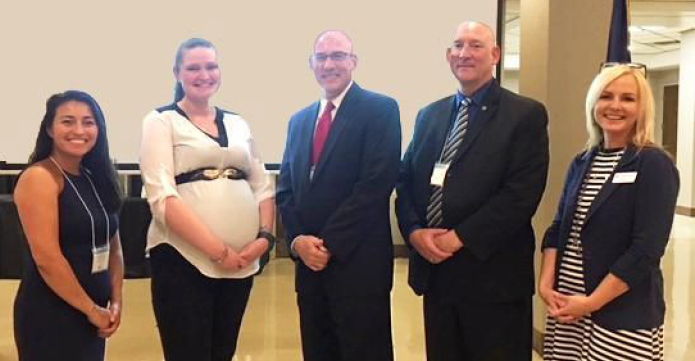
Trauma informed sexual assault response: KCSDV and KBI also held the course Trauma Informed Sexual Assault Trainings with presenter Chief (Ret.) Tom Tremblay. About 1,000 professionals attended. Attendees included law enforcement officers, prosecutors, community-based advocates, system-based advocates, sexual assault nurse examiners, forensic nurses, and forensic laboratory personnel. Eight training courses were held in Manhattan, Hutchinson, Pittsburg, Wichita, Hays, Garden City, Topeka, and Overland Park February 5 – September 14, 2018.
The training acknowledged sexual assault as one of the most complex crimes in our society and addressed the high public activism and outrage about sexual assault, exploring myths and biases. The neurobiology of trauma through the lense of all multidisciplinary partners in sexual assault cases was discussed. The course also covered how responders’ work with victims contributes to the victims’ immediate and long term recovery.
Learn more about the Sexual Assault Kit Initiative on KBI’s website at http://www.accesskansas.org/kbi/saki.shtml and on the Research Triangle Institute‘s (RTI) website at https://www.rti.org/impact/sexual-assault-kit-initiative-saki-training-and-technical-assistance-tta.
KCSDV’s upcoming training courses can be found on KCSDV’s website at https://www.kcsdv.org/train/.
The open enrollment period for 2019 HealthCare.gov Affordable Care Act Marketplace health care insurance plans is November 1 – December 15, 2018. Visit https://www.healthcare.gov/ to learn about and apply for 2019 health care insurance coverage. After an application is approved, applicants can enroll in the enrollment period of Nov. 1 – Dec. 15.
Information for victims and survivors of sexual and domestic violence: A victim and survivor of domestic violence can apply for Affordable Care Act Marketplace health care insurance at any time of the year by requesting the special enrollment period (SEP) – and then victims and survivors will need to enroll for the Affordable Care Act Marketplace health care insurance plan via the SEP within 60 days of applying.
The Kansas Coalition Against Sexual and Domestic Violence (KCSDV) is a member of the Cover Kansas Coalition. The Cover Kansas Coalition is a statewide Kansas group of community partners whose mission is to build awareness, facilitate enrollment, and promote health insurance literacy through collaboration, education, and engagement in an effort to reduce the rate of uninsured in Kansas. Visit Cover Kansas Coalition’s website at http://www.coverks.org/.
Contact HealthCare.gov with any questions about HealthCare.gov Affordable Care Act Marketplace health care insurance coverage and plans.


In April 2018, KCSDV coalition member program Options Domestic and Sexual Violence Services (Options) began providing victim advocacy services at an additional location in Colby, Kansas.
Before the expansion, Options had an administrative office and a shelter in Hays. The new satellite office in Colby is about two hours west of Hays.
Options’ service area covers the 18 counties in the northwest corner of Kansas. The new Colby location helps the organization’s services be more accessible for residents of the most western counties of the 18.
Geographic isolation is a barrier for victims and survivors of sexual and domestic violence in western Kansas: Rural isolation can increase the likelihood of experiencing greater delays in accessing services – or having no access to services at all. Increased isolation can mean increased risk and danger for victims and survivors.
More recently in August, Options announced a great donation that included a commercial building also in Colby. Options plans to renovate the building, turning it into a shelter, after a future capital campaign.

“The donation is the largest in our organization’s history, and the effects will have a lasting impact on the community and victims in [Thomas County and] surrounding counties.” Executive Director of Options Jennifer Hecker said.
Read more about the new satellite office on the Hays Post website at https://www.hayspost.com/2018/03/02/options-announces-opening-of-colby-office. Visit Options’ website at http://help4abuse.org/.
Accessing legal services is a common barrier for victims and survivors. The access can be a barrier because of the expenses often required to hire an attorney and because of an abuser’s inflicted physical and social isolation and financial abuse. Abusers commonly restrict a victim’s access to money and bank accounts and act in other coercive ways.
KCSDV’s Legal Assistance to Victims Project recruits private attorneys to provide representation at no cost to victims and survivors of sexual assault, domestic violence, and stalking. The project has a special focus on sexual assault and immigration.
“Attorneys participating in the project can truly help empower and give hope to victims and survivors in crisis,” said KCSDV Director of Legal and Policy Sara Rust-Martin.
Attorneys of the project help with crime victim compensation, custody and visitation, disability, divorce, education, employment, housing, immigration, name changes, paternity, and protection order hearings.
Four goals of the project:
- Expanding knowledge about sexual assault, domestic violence, and stalking
- Providing and increasing survivor access to quality attorneys
- Improving the network of experts and access to information in Kansas
- Providing expert knowledge, assistance, and support to attorneys, law enforcement officers, advocates, and victims and survivors

Interested attorneys and advocates can contact KCSDV’s Director of Legal and Policy Sara Rust-Martin at srust-martin@kcsdv.org and 785-232-9784.
On October 1, 2018, Kansas Governor Jeff Coyler proclaimed October 2018 Domestic Violence Awareness Month in Kansas.
KCSDV Executive Director Joyce Grover, seven members of KCSDV’s staff, and YWCA NE KS Center for Safety and Empowerment Program Director Michelle McCormick were at the Governor’s Office for the proclamation signing.

(DVAM) increases awareness about domestic violence. Domestic violence is a pattern of abusive and coercive behavior used to gain dominance, power, and control over an intimate partner.
“Domestic violence is a widespread, preventable, public health problem, directly affecting at least 35 percent of all Kansans – and indirectly and directly affecting us all,” said KCSDV Executive Director Joyce Grover.
Domestic violence can be lethal: At least 22.3 percent of all homicides in Kansas in 2017 were domestic violence-related.
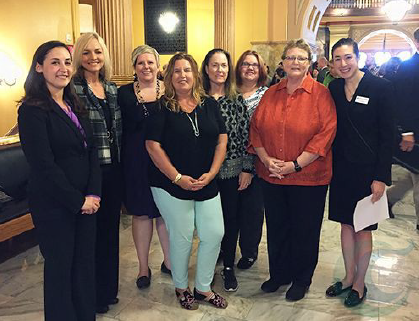
Learn more about domestic violence and where to find help on KCSDV’s website at http://kcsdv.org.
National Hispanic Heritage Month was September 15 – October 15. National Hispanic Heritage Month celebrates the histories, cultures, and contributions of American citizens whose ancestors came from Spain, Mexico, the Caribbean and Central and South America. Check out this piece by the National Sexual Violence Resource Center (NSVRC) on how to center, uplift, and make space for those who identify as Afro-Latina/x.
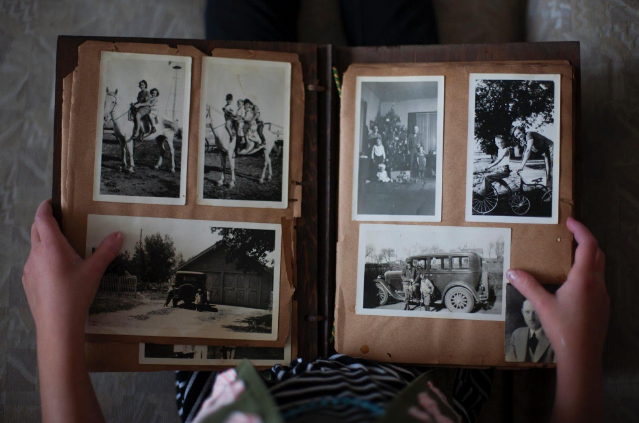
Learn more about National Hispanic Heritage Month on the Library of Congress’ website.
By Kathy Ray, KCSDV Director of Advocacy, Education & Rural Projects
One question often asked in our work on behalf of victims and survivors of sexual and domestic violence is, “Why doesn’t she leave?” To answer this question, we have to examine why this question is commonly asked. Many people ask, “Why doesn’t she leave,” in an effort to offer a resolve or end to the abuse and violence.
As national expert Ret. Chief Tom Tremblay said at a training I recently attended, “We could do an eight hour training just on the thousands of reasons why victims don’t leave.”
It is true that there are many valid reasons why victims do not – and cannot – just leave. Fear of the perpetrator and what the perpetrator might do, fear for the safety of the children, and fear for the safety of family, friends, loved ones, or pets are just a few of the many reasons why victims cannot just leave. Leaving or ending an abusive relationship does not end the abuse.

For many, it makes it worse. A victim’s safety is most at risk during separation– when she is attempting to or planning to leave. This is commonly referred to as “separation violence.” Separation violence occurs, because perpetrators feel a sense of ownership over and entitlement to control victims; they experience a loss of control at separation and then try to regain it by escalating their violence and abuse. In some cases, this ends in murder as the ultimate act of power and control.
Asking “Why doesn’t she leave” as a resolve or end to the abuse is not the answer. It also leaves out one important aspect of the violence and abuse – the one and only person who has the ability to stop it – the perpetrator.
Others ask, “Why doesn’t she leave,” to better understand victim behavior. We should seek to understand victim behavior so we can better our responses to them. However, the perpetrator again gets lost in this analysis, leading many failing to identify and understand perpetrators and their modus operandi – or MO – method of operation. We must understand and talk about perpetrator behavior just as much as we do victim behavior.

Perpetrator behavior reveals common displays of denial, minimization, and blame that is often misunderstood and misinterpreted as innocence.
To understand victim behavior and improve our responses to them, we have to first understand trauma and trauma responses.
Underneath victim behavior are complex feelings associated with the trauma of sexual and domestic violence. Victim behavior is often threaded with physical and emotional pain, trauma, and fear. These complex feelings shape behaviors, so understanding them provides context for understanding behaviors that, at times, seem contrary to the norm.
Because we can’t see feelings but can see behaviors, our typical response is to the behaviors we see. But, when helping victims of trauma, responding to behaviors we see can lead to inappropriate responses.
For example, a victim who is feeling anxious or nervous may laugh while disclosing an assault – a behavior that some might associate with dishonesty. A victim who is feeling shame or guilt may not make eye contact – another behavior associated with lying or dishonesty. In these examples, if we respond to the victim as though they are lying or being dishonest, instead of seeking to understand the feelings underneath that behavior, our responses will be inappropriate and make things worse for the victim.
Some feelings, like fear, are a direct response to the behavioral threat posed by the perpetrator. Other feelings associated with trauma, such as shame or guilt, are a direct response to the societal messages victims and survivors receive about rape, sexual assault, and domestic violence: If you are raped or assaulted, you did something wrong, you should have protected yourself better, or you brought it on yourself. These messages stem from the long-held belief that “boys will be boys” and that there is nothing that can be done about that so women and girls have the ultimate responsibility to protect themselves. We see these victim-blaming messages everywhere, every day. Perpetrators count on and manipulate these messages to avoid and evade accountability.
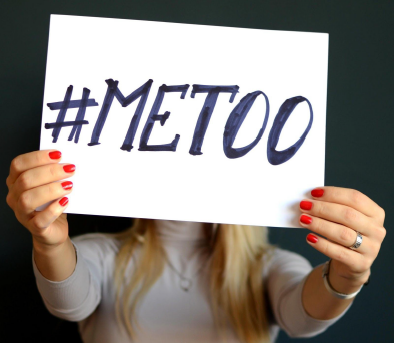
The recent media attention to sexual assault is a good example of this. Instead of supporting the victims and survivors who have the courage to come forward and disclose their assaults, they are discredited, not believed, and shamed by many – all messages that what happened to them doesn’t matter, that they do not matter.
We live in a society where 1 in 3 women will be the victim of sexual
violence and 1 in 4 women will be the victim of domestic violence.
Given the high prevalence of sexual and domestic violence in our society, why are victims and survivors still not being believed and supported?
We have to ask these important questions if we want to end this abuse and violence. We have to change the societal messages and beliefs around sexual and domestic violence, including our responses to perpetrators.
We have to change the question from “Why don’t they leave” to “Why do they abuse, assault, and rape?” Only then will we be able to understand the root causes of sexual and domestic violence and work to end it.
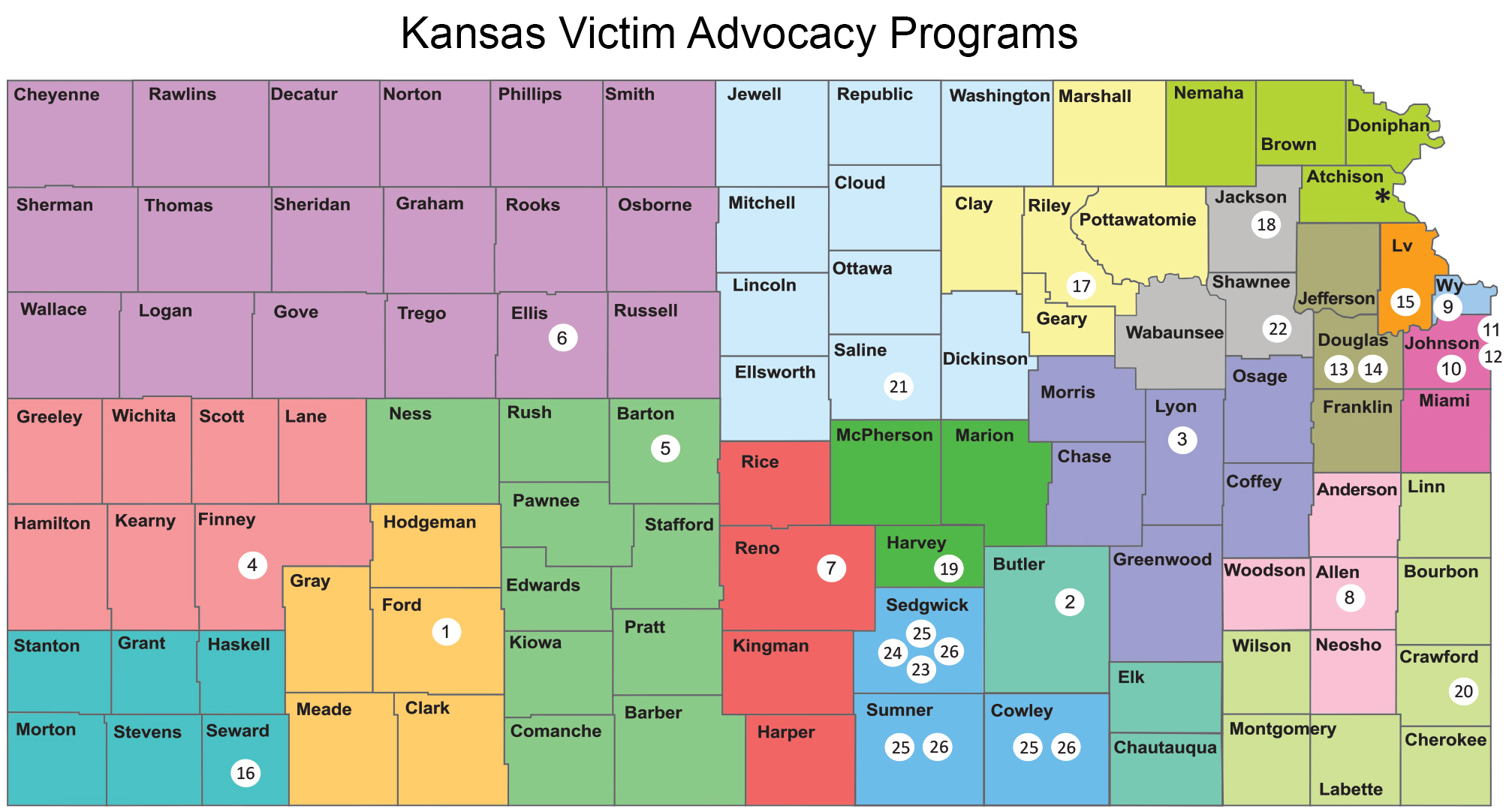
KANSAS CRISIS HOTLINE: 888-END-ABUSE | 888-363-2287
Last Updated on Jul 8, 2019